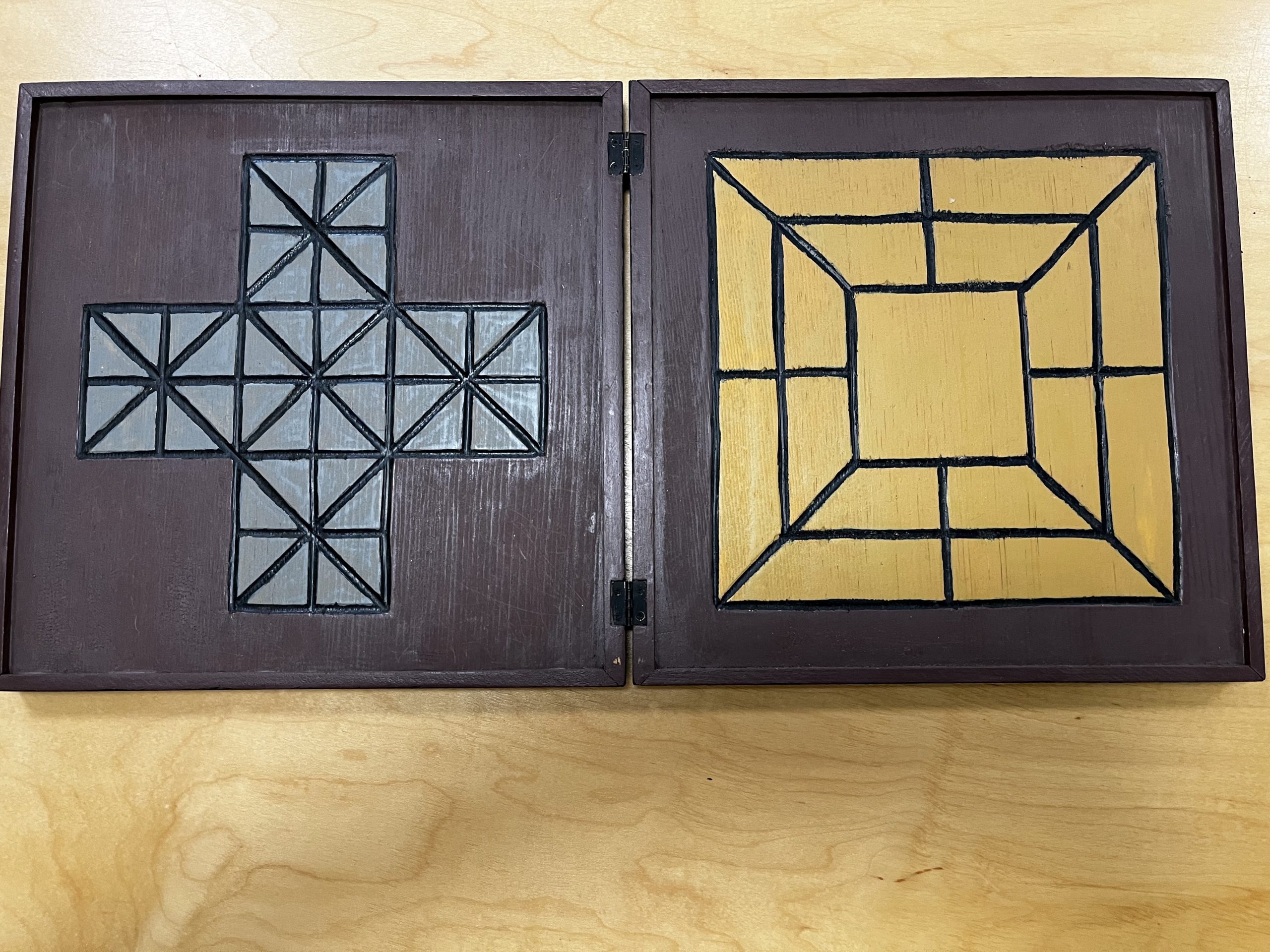When we study British colonial America, it is absolutely vital that we capture the diversity of the area. There wasn’t just ONE kind of person in the colonies, there were many. Looking at the colonies through a purely European lens does a disservice to our students, for those who desperately want to see themselves as part of America’s founding as well as those who need to see people that don’t look like them as an important part of America’s history.
When we begin our year, we talk about “otherness” and how by othering people there is misunderstanding and a probability of violence. However, it’s also a priority to see how cultural traditions can also be very alike if we choose to see the similarities. Cue in 17th and 18th century games!
When I visited Historic Deerfield I learned about games played around the world at their History Workshop. I had previously heard of Nine Men’s Morris as a tavern game, but I didn’t know its relatives: Morabaraba from Southestern African countries, Achi from West Africa, Shax (pronounced “Shah”) from Somalia, and Picara from the Zuni Pueblo. Students learn a lot through play, and discussing the similarities and differences between the games by playing them is a great way to discuss different cultures in a way that feels safe, which is perfect for the beginning of the school year. [Each game name has the rules linked to it from various sources!]
The games are all strategy games, and the object of each game is to either block the opponent’s pieces by making a row of three or to simply make a row of three. Each is played on a square board with three concentric squares called a Mill Board. Some of the boards also have diagonals.
The beauty of these board games (besides the great discussion you can have around them) is that there is nothing to buy to play them! You can make the game boards for free and use different items like beads, rocks, beans, or corn kernels as the game pieces. This makes it easy for us to accommodate even our largest classes. Students can make their own game boards or you can print the game boards for them. The way I envision this is having students take 10 minutes to try each game (they won’t finish!) or have groups of students play a game in its entirety and then describe the game to the other students in the room while comparing and contrasting each one.

[Image description: two game boards. One shaped like a plus sign with diagonals in each smaller square, the other a square with two other squares inside and diagonal lines at each corner.]

[Image description: a red square with three concentric squares connected by diagonal lines with dots where each line meets]
